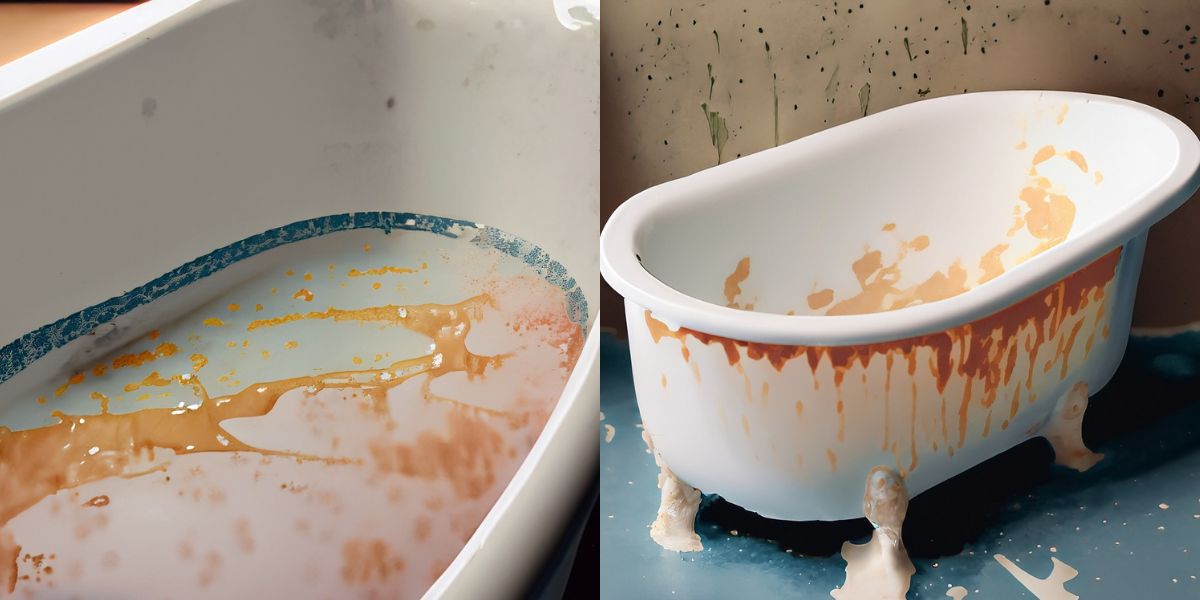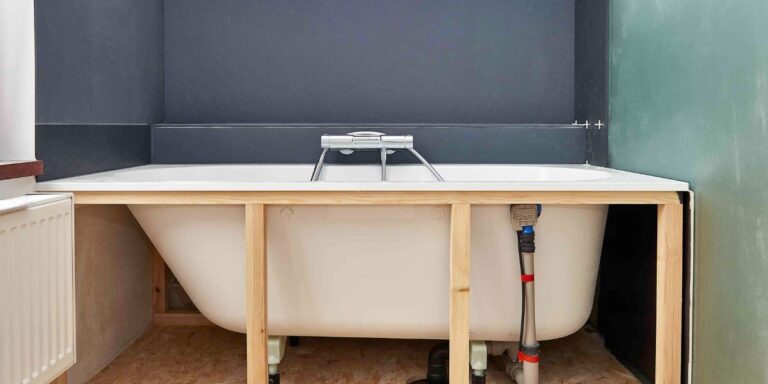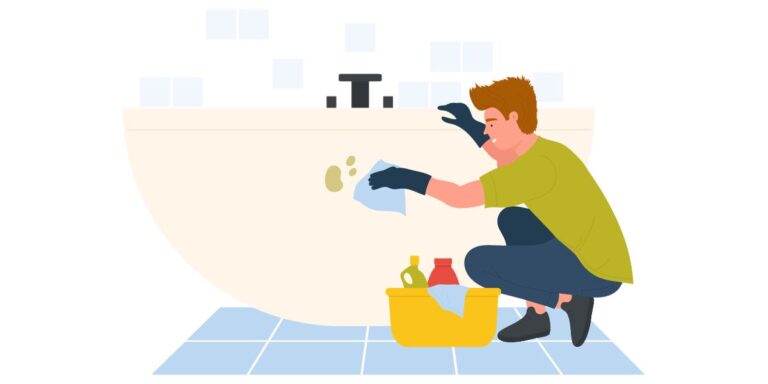Acrylic Bathtub Stains That Won’t Come Out? Here’s How to Remove Them
Ugh, I know how frustrating it can be to deal with bathtub stains that just won’t budge! As an avid DIYer and mom of two messy kids, I’ve had my fair share of cleaning struggles without scratching when it comes to our acrylic tub. No matter how much elbow grease I’ve put in, those soap-scummy rings around the tub or the rusty spots from the faucet never seem to fully come out with just regular cleaning.
Over the years, through trial and error, I’ve discovered some super effective methods to get rid of the toughest acrylic bathtub stains. Let me tell you, once I learned why acrylic is so prone to staining and what supplies and techniques really strip away the grime, I was able to make our bathroom shine again. Now I want to share what I’ve learned so you can restore your tub and prevent future stains too!
My Tested Best Bathtub Stains Removers For You

RMR-86 Instant Mold and Mildew
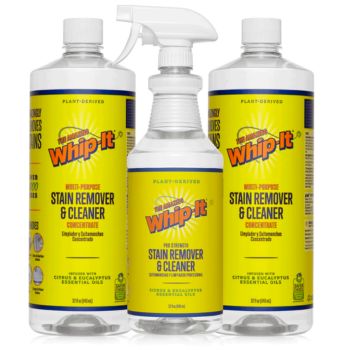
Whip-It Stain Remover

Stanley Home Products
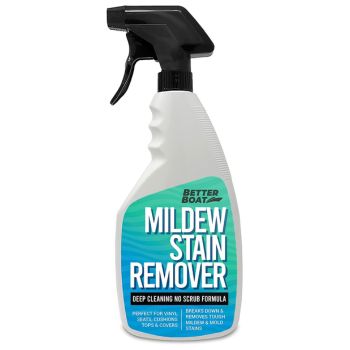
Mold and Mildew Stain Remover Cleaner
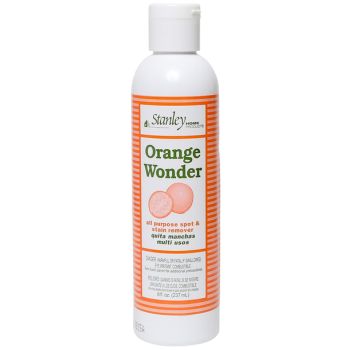
All-Purpose Spot and Stain Remover
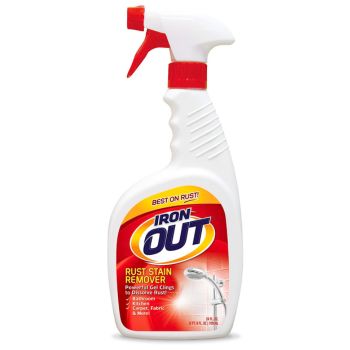
Iron OUT Spray Gel Rust Stain Remover
Why Are Bathtub Stains So Stubborn in Acrylic?
The acrylic material that most modern bathtubs are made from is essentially a type of plastic. It’s designed to be durable and waterproof, which is great except for the fact that acrylic tends to easily trap dirt, oils, soap residue, and mineral deposits from water.
Over time, the pores in the surface collect grimy build-up that becomes more and more difficult to remove. Things like minerals from hard water, soap scum, and product residues eat away at the acrylic and leave stains if not cleaned regularly. Acrylic tubs in humid bathrooms are susceptible to mold and mildew growth, which can also discolor the surface.
No one wants to soak in a dirty, stained-up tub! But acrylic’s tendency to cling to gunk makes it extra tricky to clean sometimes. Don’t worry though – with the right techniques, even the most stubborn acrylic tub brown stains can be removed.
The Most Common Tub Stains and How They Happen
To target the tub stains you’re dealing with, it helps to understand exactly what’s causing them in the first place. Here are some of the most typical acrylic bathtub stains and how they occur:
Soap Scum and Hard Water Stains
Ever notice a filmy, whitish, or gray residue left in your tub? That’s a classic case of soap scum combined with mineral deposits from hard water. Soap reacts with the calcium and magnesium in hard water, causing that sticky scum.
Over time, the soap scum absorbs other grime, resulting in stained, cloudy build-up on the surface. It’s most noticeable around the faucets and along the walls of the tub where water pools.
Find out the 9 Best Cleaners For Acrylic Tubs – They Provide Deep Clean
Rust Stains
If you see orange-brownish discoloration in your bathtub, chances are it’s stubborn rust stains. Iron in water sources or coming from metal fixtures can cause rust.
Rust stains often start small but become more noticeable over time as the iron oxides build up. Once set in, they can be tricky to remove from the porous acrylic surface.
Mold and Mildew
You’ll know mold and mildew by the dark spots – usually greenish or black – that develop in your tub. Mold thrives in the warm, moist environment. If not dealt with promptly, mold can eat away at the acrylic and become difficult to eliminate.
Mildew is often the culprit behind the nasty black ring around the tub. It leaves ugly stains if the acrylic isn’t wiped down after bathing.
Hair Dye or Product Stains
Vivid colored stains like blue, green, black, or red in your tub? Hair dye is likely the culprit. Manic Panic red splashed on the tub while dying my hair left a stubborn stain for months!
Other bath products – like fake tanners, masks, and bubble baths – can also discolor the tub over time as the acrylic absorbs the pigments.
Arm Yourself with the Right Cleaning Supplies
To win the battle against the toughest bathtub stains, having the right cleaning tools and products is key.
Here are the must-have supplies I keep on hand for top-notch tub cleaning. You likely already have some of these in your cabinet such as Mr Magic cleaner!
Baking Soda or Oxygen Bleach Powder
Baking soda is a magic eraser when it comes to soap scum stains. It works by abrasively removing grime and neutralizing stubborn odors. Make a paste with water to really scrub away build-up.
Oxygen bleach powder also lifts stains without harsh fumes. I sprinkle it on for mold, mildew, and rust stains.
Liquid Dish Soap
Good old dish soap paired with water is all you need for light bathtub cleaning. The degreasing formula helps erase oily residue and lift dirt from the tub. It’s safe for acrylic too.
White Vinegar
My thriftiness loves vinegar – it cleans so many things! The acidic formula helps dissolve soap scum, hard water deposits, and rust stains on tubs. Plus, it has antimicrobial properties to kill germs.
Soft Scrub Brush and Old Toothbrush
To help scrub away grime, always keep a designated tub brush on hand. I also love using an old toothbrush for scrubbing in crevices.
Pumice Stone
This mildly abrasive volcanic stone works wonders on really stuck-on hard water or rust stains. After soaking the area with vinegar, use the pumice stone to gently buff the stain away.
Read this article: Can You Clean Your Bathtub with Dawn?
How to Remove Acrylic Bathtub Stains That Won’t Come Out?
Now for the fun part – tackling those tub stains head-on! Here are the best methods I’ve used to erase all different types of tricky acrylic bathtub stains:
Baking Soda Paste for Soap Scum
To remove soap scum or hard water stains:
- Wet the tub and sprinkle a generous layer of baking soda over the stains.
- Add just enough water to form a spreadable paste.
- Let the paste sit for at least 30 minutes (I do it overnight!).
- Scrub with a soft brush in circular motions.
- Rinse tub well and wipe dry.
The baking soda paste works like magic to lift that dingy film once and for all!
Vinegar Spray and Pumice Stone for Rust Stains
For orange rust stains on your tub:
- Spray undiluted white vinegar directly on the rust.
- Let sit for 15-20 minutes.
- Wet pumice stone and gently scrub rust stain in a circular motion.
- Rinse thoroughly – it may take a few applications.
The vinegar helps dissolve the rust bond while the pumice whisks it away.
Oxygen Bleach for Mold and Mildew
To easily strip off mold and mildew stains:
- Put on gloves and goggles – safety first!
- Sprinkle oxygen bleach powder liberally on the affected area.
- Mix with just enough water to form a paste.
- Let sit for at least an hour.
- Scrub with your brush and rinse clean.
This method usually lifts even the toughest mold stains after one application. So satisfying!
Dish Soap for Hair Dye or Product Stains
For removing artificial dye or product stains:
- Squirt dish soap directly on the stain.
- Use an old toothbrush to scrub it in.
- Let it sit briefly before rinsing.
- Repeat as needed until the stain dissipates.
The degreasing properties in dish soap help break down and lift pigment staining.
Keeping Your Tub Sparkling
Now that you know how to banish tub stains, here are some of my top tips for keeping your acrylic surfaces spotless:
- Squeegee or wipe down your tub after each use to prevent soap scum buildup. This simple habit prevents so many future stains!
- Apply a car wax or gel coat sealant to your tub every 1-2 years. This protects the porous acrylic surface from staining over time.
- Always use bath mats or grippy stickers inside the tub. This prevents slipping and keeps dirt and oils off the tub surface.
- Promptly scrub off kid’s bath art or bath bomb stains before they have time to set in.
- Open windows or run fans during and after showering to lower humidity and deter mold growth.
Call in the Pros for Serious Staining Issues
While DIY cleaning can tackle most tub stains, there are times to call in reinforcements. If you’re dealing with:
- Major mold and mildew damage – hire a professional to remediate dangerous mold.
- Surface etching or tub damage from extensive staining – a pro may need to refinish or resurface your tub.
- Stains that don’t budge after multiple aggressive cleaning attempts – you may need a heavier duty cleaner.
- Slow draining from excessive buildup – call a plumber to safely clear the drain.
Some staining is cosmetic, but be sure to address major mold growth before it becomes a health issue. And as a last resort, an acrylic tub refinishing service can work wonders!
I hope all these DIY bathtub cleaning tips help you destroy those pesky tub stains for good. With the right scrubbing tools and techniques, you can have your acrylic tub looking sparkling again. Let me know if you have any other tried and true methods for blasting through bathtub grime!

William J. Bullock is a licensed plumber with over 15 years of experience installing and repairing bathtubs. He runs his own plumbing company in Greenville and serves residential and commercial clients. William is dedicated to providing honest, transparent advice to help homeowners make informed decisions about their bathroom renovations.
He has established expertise in selecting bathtubs, planning custom installations, diagnosing issues, and completing repairs. William aims to share practical tips and reliable recommendations based on extensive hands-on work. When he isn’t on a job site, William enjoys spending time with his family and volunteering at local community events. He takes pride in delivering quality service and enjoys helping people upgrade their homes.

